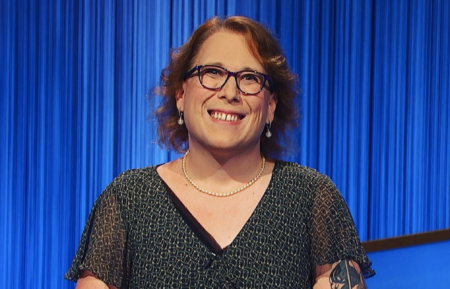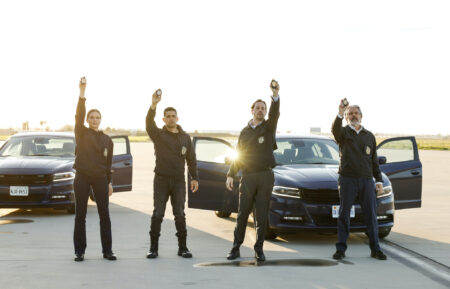Graphic Content: TV Shows Ripped from the Pages of Comic Books
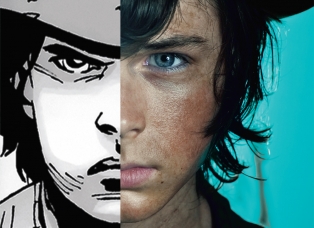
No one seems more surprised by the success of The Walking Dead than Robert Kirkman. The creator of the top-rated show, which returned from hiatus on February 8, as well as the writer of the Image Comics series on which it’s based, had watched as his zombie-apocalypse saga was optioned, and ultimately passed over, by a slew of broadcast and cable networks, beginning with NBC in 2005. Kirkman thought he understood the networks’ reticence. “Zombies are essentially people who eat people, so it’s a cannibal show,” he says. “I was like, ‘I can’t foresee a cannibal show on television.'”
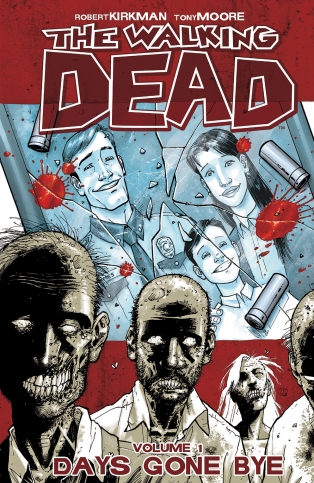
That wasn’t the only problem. Comics were doing big business on movie screens in 2005 (Marvel’s X-Men and Spider-Man franchises were well-established box-office juggernauts, and DC would reboot Batman with director Christopher Nolan to great critical and commercial success), but TV execs still viewed them with skepticism. Superman, Batman, and the Hulk had had successful live-action TV iterations between the 1950s and the 1980s, but by the mid-2000s, the only long-running series with comic book roots was Smallville, a hit for The WB (and later The CW) that chronicled Superman’s early years as Clark Kent. For networks, comics were seen as niche. “Historically,” says Kirkman, “everyone who adapted comics had the notion, ‘We have to make this more appealing to a wide audience’ or ‘We have to get rid of some of the silly elements.'”
So when The Walking Dead finally landed at AMC, where it debuted–in all its gory, twisted glory–in 2010, its success would ultimately play an integral part in opening TV to the vast comic book universe. Today, there are six other live-action shows based on comics: The CW’s Arrow and The Flash, ABC’s Marvel’s Agents of S.H.I.E.L.D. and Marvel’s Agent Carter, NBC’s Constantine, and Fox’s Gotham, centering on Batman ally Jim Gordon. And at least five others are slated to premiere in 2015, including The CW’s iZombie, PlayStation’s Powers, and Netflix’s Marvel’s Daredevil, with a dozen or so in development.
Kirkman–who is adapting Outcast, one of his comics from his Skybound imprint at Image, for Cinemax, as well as executive producing Syfy’s Clone, based on David Schulner’s Skybound/Image comic, and developing a Walking Dead offshoot tentatively titled Cobalt–says attitudes have undergone a sea change in the last few years. TV executives no longer think they “know better when adapting a comic book,” he says. “There’s a reverence and respect for the medium showing through in these adaptations. That’s one of the things leading to their success.”
For a long time, even film studios regularly fumbled comic book adaptations. Although several small-press titles like The Crow, Spawn, and The Mask became successful movies, during the ’80s and ’90s, DC Comics had a hit-and-miss record with marquee superheroes Superman and Batman, and Marvel showed little interest in bringing its characters to the big screen, as evidenced by its licensing of Captain America for a 1990 straight-to-video clunker and Fantastic Four to B-movie kingpin Roger Corman for a 1994 film that was never even released. Steven DeKnight, who was a writer and producer for Smallville and is the showrunner for Daredevil, traces the roots of TV’s current comics craze to a moment in 1996. “The huge cosmic shift came when Marvel started their own studios,” he says. “Now they weren’t going to a third party that was translating the material. You had people who actually knew the canon and respected the work.”
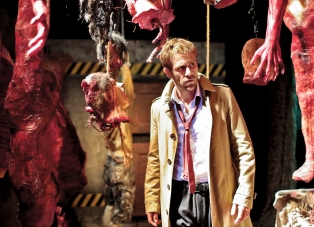
According to David S. Goyer, a writer and exec producer on Constantine (based on Vertigo/DC’s Hellblazer) who has worked on several movie adaptations, including The Dark Knight and Blade trilogies, Man of Steel, and the upcoming Batman v Superman: Dawn of Justice, the move from film to TV was inevitable once it proved profitable. “The TV industry saw what was happening in features and thought, ‘Why not try to replicate that success?'” says Goyer, who’s also developing the Syfy series Krypton, focusing on Superman’s grandfather.
Arrow, based on DC’s Green Arrow, was the first comics adaptation to break through on TV post-Walking Dead. When the show premiered in 2012, The CW was still smarting from the loss of Smallville, which finished a 10-year run the year before. “When Smallville ended, The CW lost a lot of men 18 to 34, and men in general,” says network president Mark Pedowitz. “We realized we needed to do something to bring them back. Arrow was the first real attempt.” The story of billionaire rake Oliver Queen’s transformation into a vigilante quickly found an audience, and two years later came The Flash, a spinoff that’s now The CW’s most watched series. The shows “brought men back,” says Pedowitz. “It broadened our audience, which made us more interesting to our affiliates and to many advertisers.”
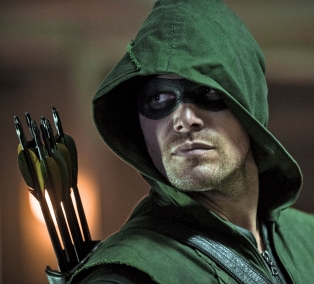
There’s an element of corporate synergy to the current wave: DC, which publishes Green Arrow and The Flash, shares a parent company, Time Warner, with The CW; Marvel, which puts out the comics in which Agent Carter and the Agents of S.H.I.E.L.D. feature, is owned by Disney, as is ABC, which broadcasts both shows. Still, that wouldn’t make much difference if not for significant technological advances. “We’ve gotten to a very sophisticated place in terms of visual effects,” says Jeph Loeb, Marvel’s head of TV. “You’re able to produce the kind of quality people expect not just for the budget you have but also the amount of time you have.” This is reflected not only in making more stuff explode, explains Agent Carter coshowrunner Tara Butters, but in subtle ways too: “In the pilot, when Howard Stark gets in the boat and starts motoring off, [1940s] Manhattan in the background is a visual effect. We couldn’t have done that even five years ago. The cost would’ve been astronomical.”
These developments are all the more powerful because viewers today are spoiled for choice. “At any given moment, when you’re flicking around channels at home, Thor is on, Man of Steel is on, so you’re competing against those movies too,” says Andrew Kreisberg, a TV and comics writer who was cocreator and co-executive producer of Arrow before undertaking the same work on The Flash. “If you’re not delivering the spectacle you see in a feature, it’s always going to feel less than.”
While the movies began exploiting comics’ potential nearly a decade before TV did, the latter is perhaps a more natural fit for the medium. Pedowitz calls comics “gigantic serialized soaps. You have a treasure trove of material and the ability to look at the characters and what makes them tick.” Comics also offer ready-made storyboards. “Comics are a very low-cost way to explore new concepts, just like novels,” says The Walking Dead‘s Kirkman. “But they have a leg up on novels because you can see more clearly how they’d translate.”
Balancing a fidelity to the source material with the creative license to veer from it is a delicate dance. Walking Dead star Andrew Lincoln sees this struggle as one of the defining dynamics of his show. “It’s an eternal wrestling match between the extremities of the comic and making this other thing,” he says. “I think tonally, and possibly emotionally, they try to walk the same path. But direct replicas, facsimiles, trying to be too faithful, that doesn’t work.” For any show, getting the mix wrong can have immediate, and often withering, consequences. Comic book fans tend to be, as Goyer puts it, “disproportionately vocal on the Internet. Bad buzz can really impact what the larger audience thinks, so it’s important to not stray too far from the core concepts.”
On The Walking Dead, some of the comic’s panels find their way into the show itself. Michael Cudlitz, who plays ex-military man Abraham Ford in the series, says showrunner Scott Gimple frequently references images from the comic. “Me and Rosita having sex in the store, and Eugene’s looking through the bookcase–that visual is lifted directly from a [panel],” he explains, referring to a scene from the first half of the current season. Matt Ryan, who plays the title role in Constantine, says reading Hellblazer was a revelation: “With comic books, you have the character’s inner voice written in the panels, so it’s very helpful in terms of getting inside his head.”
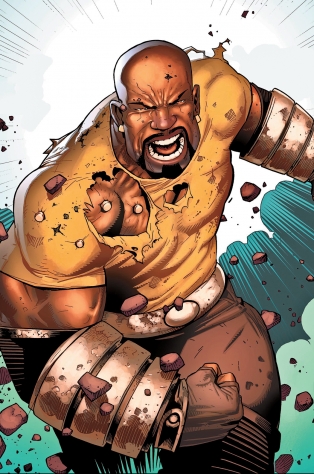
Taking in the broad swath of comic book shows either on air or in the pipeline reveals a notable focus on second-tier characters and comics. A recent deal will bring to Netflix four Marvel shows featuring what Loeb calls “street-level heroes”–Daredevil, A.K.A. Jessica Jones, Luke Cage, and Iron Fist–as well as a miniseries based on The Defenders. “What makes those characters unique is if the Avengers are here to save the universe, [these four] are here to save the neighborhood,” he says. In part, this “street-level” focus is just business. “If a character is being exploited in a big way in features, they’re not going to exploit the same character simultaneously on TV,” says Kreisberg. In other words, Marvel is not about to let audiences get their fill of a live-action Spider-Man on a weekly basis, thus endangering his ability to pull $800 million the next time he hits theaters. That said, a Flash feature scheduled for 2018 and Fox’s potential X-Men TV series suggest comics have become such a gold mine that caution may be thrown to the wind.
Nonetheless, on TV, second-tier characters also free up producers from the expectations that come with iconic superheroes and allow them to tell stories that feel more relatable. “In order to do a Batman TV show that will appeal to a mainstream audience, you have to focus on real characters like Jim Gordon,” says Kirkman. “Comics that focus more on who the people are and why they’re doing what they’re doing–as opposed to what they’re actually doing–are more tailor-made for TV.”
Not surprisingly, a hit TV show does wonders for comic book sales. Kirkman estimates that he moves 10 times as many copies as he did before The Walking Dead aired, but he tries not to let this success affect his creative choices. Although Daryl Dixon, who has never appeared in the comic, has, in the hands of actor Norman Reedus, become arguably the most popular character on the show, Kirkman has resisted the temptation to put him in the book. “I try to block all that stuff out and stay the course, because the existence of the comic is what led to all of these things,” he says. “If I allow these things to change what the comic was originally supposed to be, then I’ll feel like I failed.”
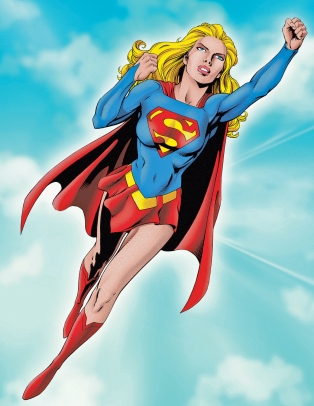
With so many comic books on TV or headed that way, how much is too much? Viewership remains strong for Gotham, Arrow, and The Flash, but second-season ratings for Agents of S.H.I.E.L.D. were down slightly from the first, the early returns for Agent Carter have been so-so, and, after a strong start, Constantine has struggled. Are audiences burning out? “That’s like saying there’s a danger of burnout from people adapting novels,” Kirkman says. “Certainly there’s a danger of burnout on superheroes specifically, but there’s a wealth of non-superhero material that’s able to be adapted into television very easily, and people are starting to wake up to that.” In addition to Kirkman’s Outcast, which chronicles a man possessed by a demon, and iZombie, about a medical student with a taste for brains (premiering March 17 on The CW), others in the pipeline include the political parable DMZ, the Western/crime drama Scalped, and Preacher, the story of a reverend with supernatural powers on a literal hunt for God, which Seth Rogen and Evan Goldberg are developing for AMC. Add to that DC’s Supergirl, Static Shock, and Titans projects, and it seems like TV is doubling down on comics.
“Honestly, I think this trend could be here to stay,” Kirkman says. “Comics are idea-generating machines, and once that starts going, it doesn’t stop.”


